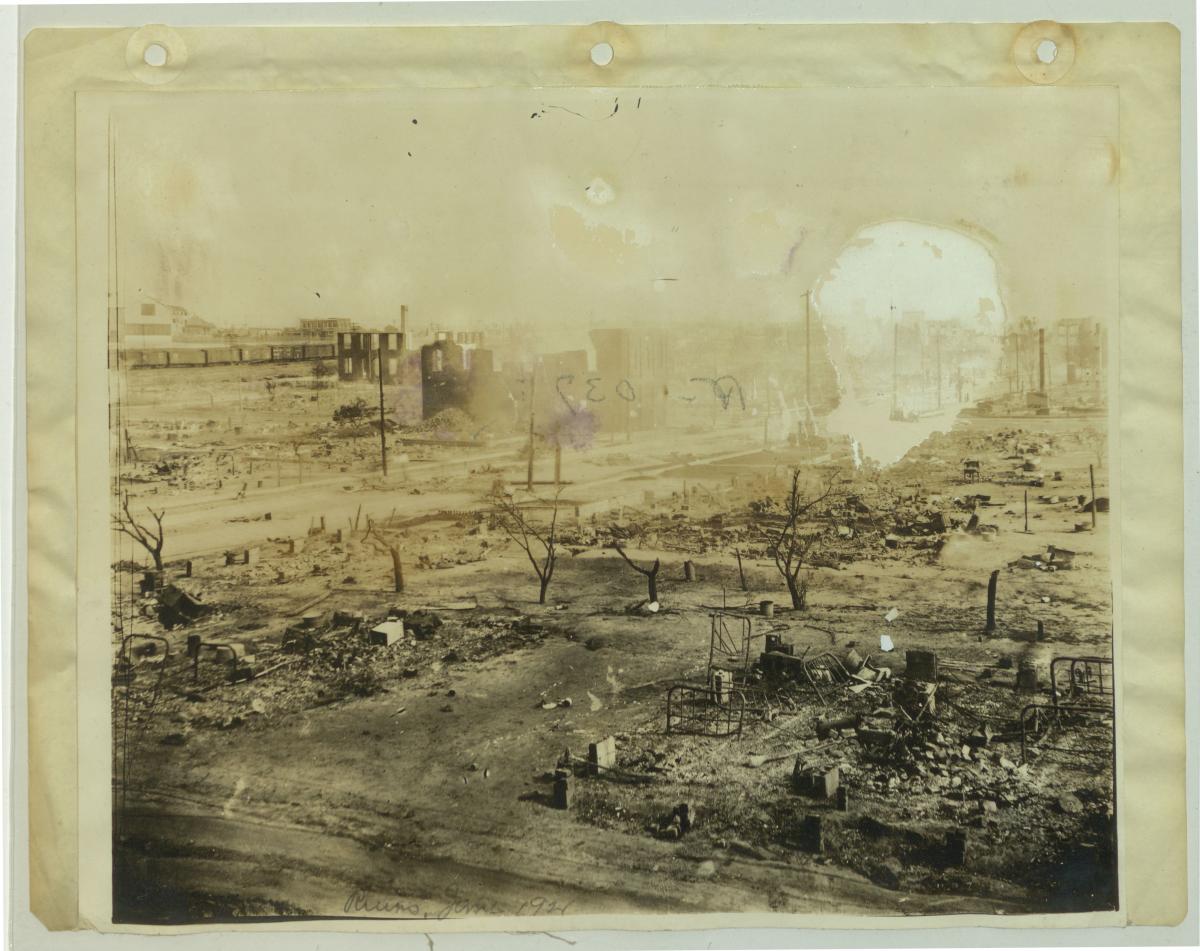
Featured Document: Remembering the Tulsa Race Massacre
By Victoria Macchi | National Archives News
WASHINGTON, May 3, 2021 — A century ago this month, the Greenwood District of Tulsa, OK, known as “Black Wall Street,” was ablaze.
An incident in an elevator between a Black teenage boy and a White teenage girl triggered two days of violence against the Black community. When the smoke lifted, the destruction was massive: White residents had mobbed the neighborhood. Scores of the city’s Black residents were dead, and dozens of blocks—homes, businesses, livelihoods—were destroyed.
"Eye witnesses will long remember the speeding ambulances, the crowded hospitals, drugstores, churches and First Aid Stations,” Maurice Willows, Director of Relief for the American Red Cross, wrote in a report at the time that is now held by the National Archives and Records Administration. “While the records show 763 wounded, this does not include wounded people afterwards found on practically all roads leading out of Tulsa.”
In remembrance of the Tulsa Race Massacre, Netisha Currie, an archives specialist at the National Archives, curated the current Featured Document Display. The online exhibit will be up until June 17, accompanied by text written by Currie.
“The massacre was widely reported at the time, and records like those displayed here document many facets of the story,” Currie wrote. “Yet, for decades the massacre was rarely mentioned publicly in Tulsa and was omitted from most mainstream American history texts and curricula.”
Currie and several colleagues regularly share research through the Rediscovering Black History blog and the African American history page and subject portals.
“This was such a heavy and important subject. I hope I did the history justice,” Currie said.
In addition to the Featured Document Display, additional resources are available for teachers to use with their students and create activities through the National Archives online portal DocsTeach.
The 100th Anniversary of the Tulsa Race Massacre Featured Document Display is made possible in part by the National Archives Foundation through the generous support of The Boeing Company.
